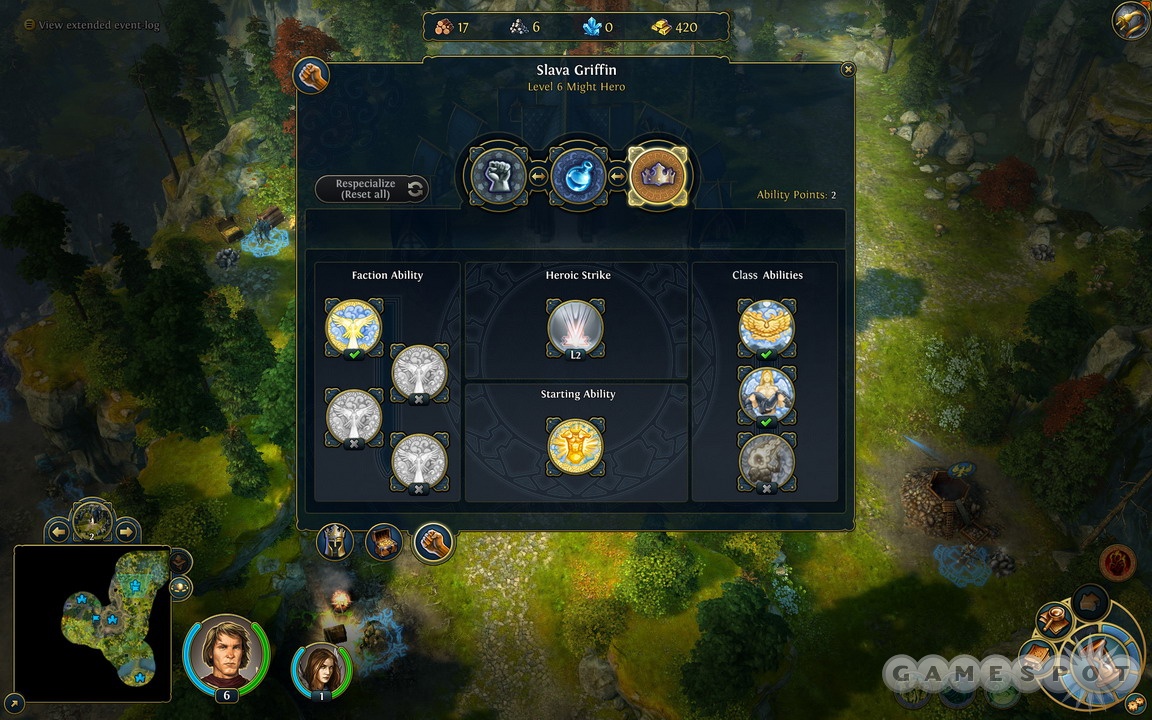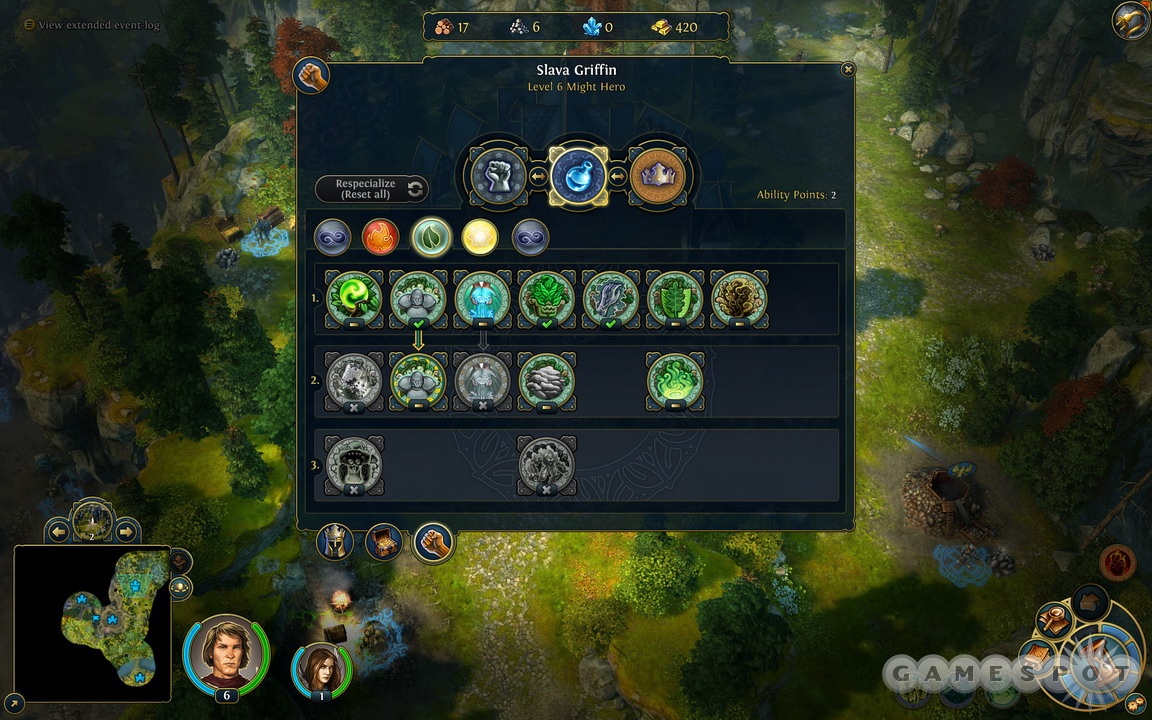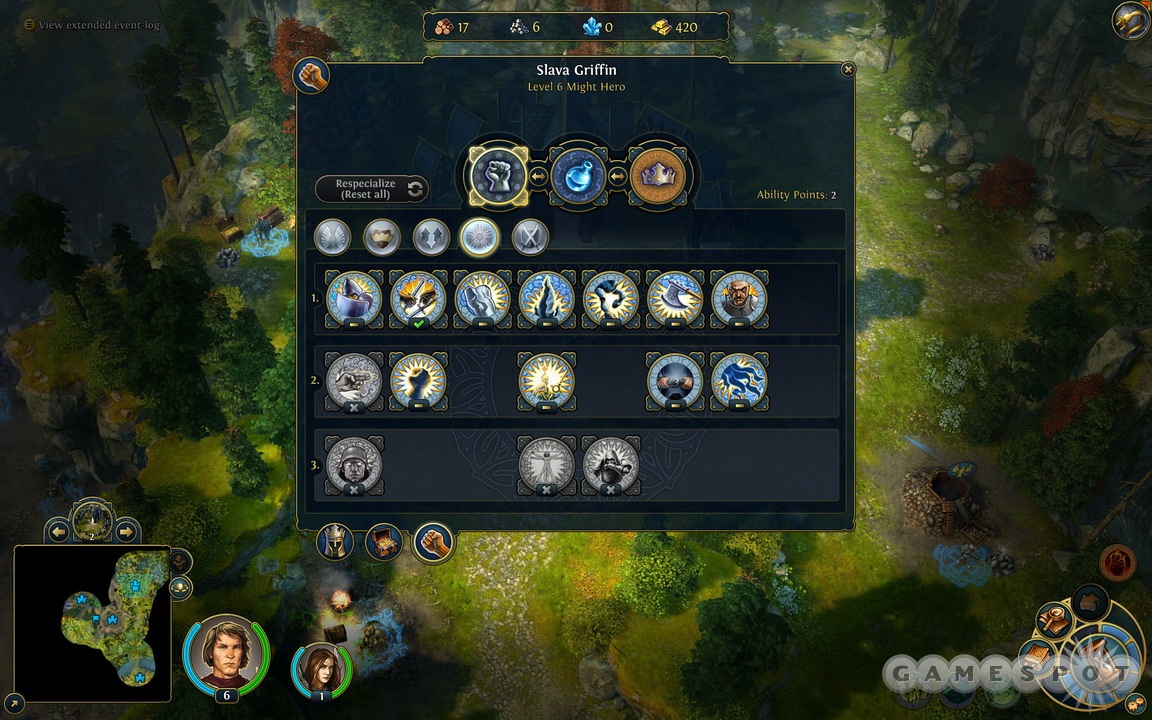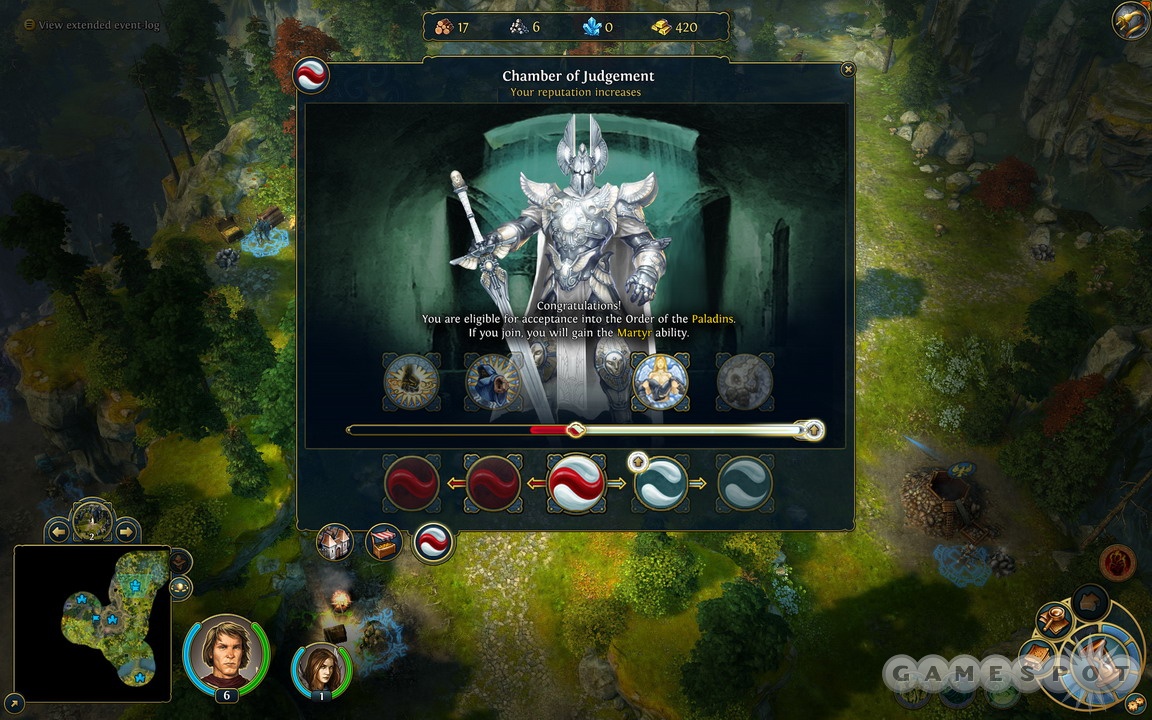Might & Magic: Heroes VI Hands-On Preview - New Story and Armies, Classic Music and Gameplay
We get our hands on the next game in the Heroes series and find much that is new, and a few surprising, classic elements from previous games.
You could say that the fantasy-themed, turn-based Heroes of Might & Magic strategy series has had a turbulent history. It was originally the product of New World Computing, a developer that shut its doors years ago. After Heroes IV, New World and its publisher, 3DO, went away, and publisher Ubisoft picked up the license and contracted Russia-based Nival Interactive (creator of Etherlords and Silent Storm) to develop Heroes of Might & Magic V. And now, Ubisoft has found another hired hand in Black Hole Games (creator of Armies of Exigo and Warhammer: Mark of Chaos) to make the sixth chapter in the series, which even has a different name. It's Might & Magic: Heroes VI now.
Roblox - Netflix Nextworld Official Trailer Halo Infinite - Official "This is Halo" Extended Multiplayer Trailer Crow Country | Official Launch Trailer Master Detective Archives: RAIN CODE Plus - Official Announcement Trailer Learn To Move Like An Ape | Kingdom of the Planet of the Apes Animal Well - Official Launch Gameplay Trailer Street Fighter 6 - 8 Minutes of Akuma Gameplay (High-Level CPU) Animal Well GameSpot Review Vampire Survivors: Operation Guns | Launch Trailer | OUT NOW PAC-MAN Mega Tunnel Battle: Chomp Champs – Launch Trailer Historian Reacts To Manor Lords MultiVersus – Official The Joker Character Reveal Trailer | “Get a Load of Me”
Please enter your date of birth to view this video
By clicking 'enter', you agree to GameSpot's
Terms of Use and Privacy Policy
So if you were a pessimist, you might figure that this new game would end up being totally unrecognizable to a fan of the original series. And while some things have definitely been shifted around, Heroes VI also has some surprising callbacks to previous games in the series, as well as new design decisions intended to finally fix long-standing issues with the Heroes games in general. We got our hands on an early version of the game and have much to report.
If you've been following the Heroes series up to the present day, you're already aware of Ubisoft's decision to make a clean break with the world and lore of Heroes I-IV and to create a new world, Ashan, with a new story and new characters. This world was the stage for Heroes V, as well as for the first-person action game Dark Messiah, and even for the Might & Magic: Clash of Heroes DS puzzle game. Heroes VI also takes place in this new world, but the campaign's story takes place decades before the events in Heroes V and details the founding of some of its factions, such as the undead armies of the necropolis lords, who will build their new nation over the course of the single-player story.

Without spoiling anything, we'll say that the plot will chronicle the downfall of the Falcon Empire--the predominant nation of human-dwelling "haven" cities (formerly known as the "castle," or "knight" town type)--and the rise of the Griffin Empire, which is the faction that held sway in Heroes V and Clash of Heroes. While Heroes V was about a war between earthly forces and otherworldly demons, Heroes VI's story involves betrayal committed by a powerful archangel for mysterious reasons, and the consequences of this betrayal.
Consequences will play a larger role in Heroes VI as part of the game's new alignment system, which assigns the outcome of various decisions to either the "path of blood" or the "path of tears." Yes, this is still a Heroes game where you recruit powerful hero characters with unique specialty powers to command forces of armies (commonly called "stacks") that are unique to your faction's cities, but many of your choices in the game will put you on one of these two paths. However, from what we've seen, this system won't be a weird, arbitrary role-playing game construct that has been awkwardly bolted onto a turn-based strategy game. Many of the ethical decisions you make will be woven into the fabric of the game itself, such as how you handle the awed surrender of a weaker stack of enemy monsters that scatter at your approach. Do you let them flee? If so, you've taken a step along the peaceful path of tears. Do you opt to pursue and engage them in order to gain more experience from killing them off? You'll be embarking on the path of blood instead. The alignment system will be represented by an onscreen meter that will fill up on either side as you gain points with either alignment.
As you focus more strongly in one direction or another, your primary character (who can be either a "might" hero with better military ability or a "magic" hero with better spellcasting ability, just like in previous Heroes games) will change appearance--wearing spikier armor or deep red robes along the path of blood, or shinier, neater armor and muted blue robes along the path of tears. Your alignment will determine what sorts of skills your characters will unlock in later levels, and it will also determine how you complete the single-player campaign, which has two entirely different ending missions for each path. Interestingly, if you're ambitious enough, you can opt to try to walk both paths by earning every last point of blood and every last point of tears you possibly can, in which case you can unlock all skills and also play through both of the final missions.
After getting an overview of all of Heroes VI's new features, we hunkered down to play two different scenarios, an early tutorial mission for the haven faction and a "boss" mission for the devilish inferno faction. The tutorial mission was extremely straightforward, but it gave us a chance to get a sense of how exploration, combat, and sieges work--and as it turns out, they don't work all that differently than they did in previous games.

Like in previous Heroes games, your hero characters command armies of various critters at various tiered power levels that you lead into tactical battles that unfold on a board-game-like map. Our low-level hero commanded an army of archers, priestesses (whose magical powers healed our allies and damaged undead monsters), and militia soldiers with the ability to soak up damage from adjacent allies. We explored the map by maneuvering our initial hero to pick up resource nodes such as gold mines and ore pits (which, just as in previous games, provide daily resource income as long as they remain under your control), along with onetime resource caches such as campfires, and power-boosting features like learning stones, which still grant your heroes 1,000 experience points when visited. And our hero made his epic journey to the tune of none other than a rearranged version of Heroes of Might & Magic II's haunting exploration theme. Apparently, Heroes VI will reprise much of the music from previous games (some of the combat music draws on Clash of Heroes, for instance).
Over the course of our adventure, we had the opportunity to get into a few skirmishes, which, like in Heroes V, take place on a tactical map divided into square tiles on a grid (though Heroes VI doesn't seem to have the scrolling icon bar at the bottom of the screen to indicate which critter has the next turn available). Because this was a tutorial mission, our archers, priestesses, and militia were able to easily trample the small clusters of skeletons and rogue militia dotting the map, but once we got to a certain point outside of our normal domain, we found ourselves unable to capture any resource nodes until we conquered the nearest town, which was controlled by enemy forces. Heroes VI has a new zone-of-control mechanic that lets you capture and hold any nearby resource nodes as long as you also own the town that exerts control over the region.

This game mechanic goes hand in hand with Heroes VI's new town portal fixture (an actual building fixture you can build early on as part of just about any town belonging to any faction), which lets your heroes instantly teleport themselves between the towns you own. Together, these features are intended to curb the age-old problem of hiring throwaway heroes to sneak into enemy territory, flag all your foe's mines, and run away with their resource income until they can send along an errand-boy hero of their own to personally recapture those key locations. While eliminating the tedium of flagging mines and running away definitely seems like a step forward for the series, letting players build town portals all over the place sounds like a huge change for the overall gameplay. Interestingly, once you capture an enemy town, you have the option to "convert" the town to the alignment of your faction--a time-consuming action that will permanently change it to produce units of your town type. This change is intended to help with the equally old problem of having armies from different towns suffer from morale deficits due to having mixed forces. Since Heroes VI will apparently let you build up a province full of converted towns with a town portal in each one, building up a huge, bloodthirsty army and moving it into position should be easier than it has ever been.
Our toughest battle in this tutorial campaign was a siege battle to wrest control of the map's southern half from a stronghold of massed undead critters, including skeleton archers, ghosts (which act as healers for the undead), and vampires. These critters were present in such large numbers that it was impossible for us to not take heavy casualties, in spite of our hero's equipment and skills. Sieges in Heroes VI involve one--and only one--siege engine, the catapult, which, as ever, still has a random chance of knocking down a wall to let attackers inside the keep. Ballistae, ammo carts, and first-aid tents are all gone--instead, these effects are replaced by your hero's powers, which, depending on their strength rating, may take one or more turns to recharge before they can be used again. We used our hero's attack-building skill, a callback to the old "bless" spell, to increase our soldiers' damage on the field while occasionally making an attack of our own--in this case, a damaging archery shot we dumped on enemy archers behind the walls.
After fighting this tough battle, we took on an even bigger challenge in one of Heroes VI's "boss" missions. These missions will consist entirely of one epic battle (no exploration or mine-capturing involved) against a powerful and especially difficult opponent with multiple special abilities. We played as the inferno faction and had a saved game file with a huge demon army at our command, so we were actually pretty well prepared for the boss, a giant spider creature said to be an aspect of an ancient goddess. Our foe possessed many powers, including the ability to spit poison as a ranged attack, the power to paralyze foes with a magical web ability, a leaping attack that let it quickly attack and engage enemies across the battlefield, and the power to summon aggressive ghosts from cocoons in her lair. Our host of misshapen demons, led by fire-hurling succubi, split their attacks between the encroaching ghosts and our adversary until the massive beast leaped forward and engaged our succubi, curtailing their ranged attack. At that point, we used our superior numbers to whale on the enemy until we had cut down its massive health bar all the way to zero.

Might & Magic: Heroes VI makes huge and intriguing changes to the Heroes series. But it also has a lot of what made the series great. We'll get a better sense of what the game has to offer as we near its release later this year.
Got a news tip or want to contact us directly? Email news@gamespot.com
Join the conversation